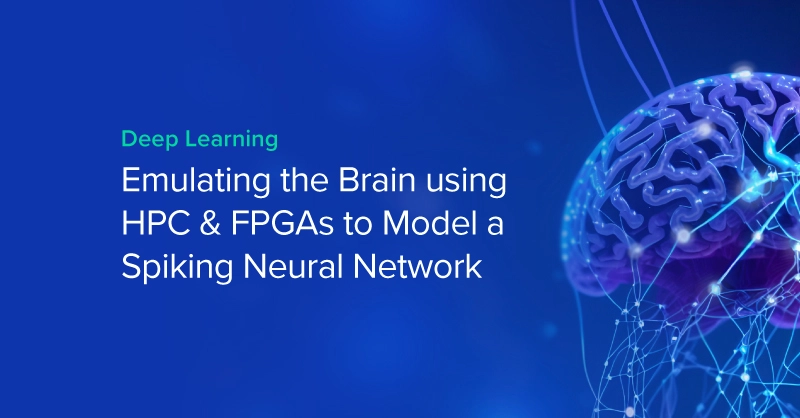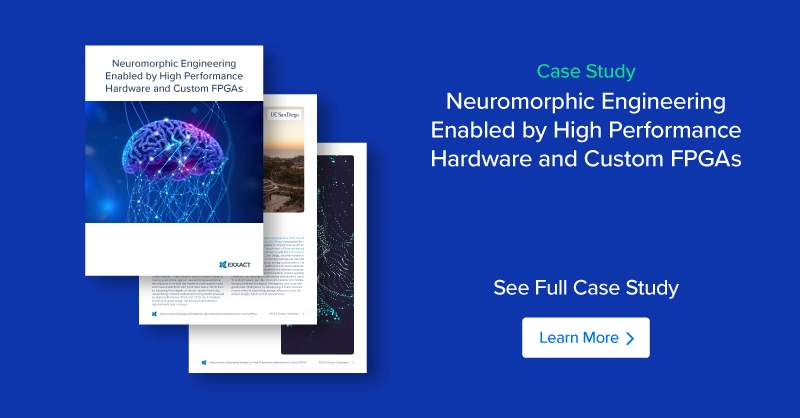
The Difference Between Biological Intelligence & Artificial Intelligence
Intelligence is often characterized by the ability to react, adapt, and learn, which is a trait shared by both humans and animals. The comparison between human brains and computers has been a common metaphor, especially with the rise of artificial intelligence (AI) that can perform complex tasks with ease. However, despite the new advancements in training, compute, and capability, AI still falls short of human intelligence. While AI and neural networks can help a computer learn and adapt, they have strayed far from their original inspirated ambition to design the structure of the biological brain.
Artificial Neural Networks consist of layers of interconnected nodes called neurons organized into multiple layers of numerically represented parameters called weights. Theses weights adjust their values as they continue to be fed a steady stream diet of data, preferably labeled and clean data. The training of ANNs require massive computing requirements necessitating the constant need to advance computing platforms like GPUs and CPUs. And while these mysterious algorithmic artificial neural networks have a purpose for making accurate predictions, their structure is fundamentally different.
The biological brain doesn’t have hundreds of thousands of watts to power multiple GPUs to help crunch millions of matrix multiplication problems. Making interesting connection to seemingly totally unrelated topics, learning new things, and adapting reactions to stimuli, all on less than 12 watts of power per day is what makes a brain so fascinating. Neurons will internalize energy from external stimuli until it reaches a threshold called action potential which fires the neuron, triggering other interconnected neurons to also fire.
ISN Lab’s Ambition and Goals - Case Study
The Integrated Systems Neuroengineering (ISN) Lab at University of California, San Diego involves new methods to emulate and compute a biologically inspired system that not only reduces power consumption but also enhances efficiency and performance of a neural network. Their specially developed Field Programable Gate Arrays (FPGAs) is used to develop a spiking neuron. Spiking neurons incorporates action potentials and thresholds to faithfully represent biological neurons.
Exxact and the ISN Lab has developed a comprehensive case study talking about the ISN Lab’s research, ambition, struggles, and goals. Read more to learn how ISN Lab’s FPGA powered Rack Server is revolutionizing and modernizing new ways to emulate a biological brain using a Spiking Neural Network.
Research starts with your computing capabilities. Exxact has provided countless resources to research institutions for solving complex problems from Deep Learning and AI all the way to Molecular Dynamics. Exxact offers EDU discounts too! Contact us today for a quote today on your very own high-performance system fit for your needs.

Emulating the Brain using HPC & FPGAs to Model a Spiking Neural Network
The Difference Between Biological Intelligence & Artificial Intelligence
Intelligence is often characterized by the ability to react, adapt, and learn, which is a trait shared by both humans and animals. The comparison between human brains and computers has been a common metaphor, especially with the rise of artificial intelligence (AI) that can perform complex tasks with ease. However, despite the new advancements in training, compute, and capability, AI still falls short of human intelligence. While AI and neural networks can help a computer learn and adapt, they have strayed far from their original inspirated ambition to design the structure of the biological brain.
Artificial Neural Networks consist of layers of interconnected nodes called neurons organized into multiple layers of numerically represented parameters called weights. Theses weights adjust their values as they continue to be fed a steady stream diet of data, preferably labeled and clean data. The training of ANNs require massive computing requirements necessitating the constant need to advance computing platforms like GPUs and CPUs. And while these mysterious algorithmic artificial neural networks have a purpose for making accurate predictions, their structure is fundamentally different.
The biological brain doesn’t have hundreds of thousands of watts to power multiple GPUs to help crunch millions of matrix multiplication problems. Making interesting connection to seemingly totally unrelated topics, learning new things, and adapting reactions to stimuli, all on less than 12 watts of power per day is what makes a brain so fascinating. Neurons will internalize energy from external stimuli until it reaches a threshold called action potential which fires the neuron, triggering other interconnected neurons to also fire.
ISN Lab’s Ambition and Goals - Case Study
The Integrated Systems Neuroengineering (ISN) Lab at University of California, San Diego involves new methods to emulate and compute a biologically inspired system that not only reduces power consumption but also enhances efficiency and performance of a neural network. Their specially developed Field Programable Gate Arrays (FPGAs) is used to develop a spiking neuron. Spiking neurons incorporates action potentials and thresholds to faithfully represent biological neurons.
Exxact and the ISN Lab has developed a comprehensive case study talking about the ISN Lab’s research, ambition, struggles, and goals. Read more to learn how ISN Lab’s FPGA powered Rack Server is revolutionizing and modernizing new ways to emulate a biological brain using a Spiking Neural Network.

Research starts with your computing capabilities. Exxact has provided countless resources to research institutions for solving complex problems from Deep Learning and AI all the way to Molecular Dynamics. Exxact offers EDU discounts too! Contact us today for a quote today on your very own high-performance system fit for your needs.




.jpg?format=webp)